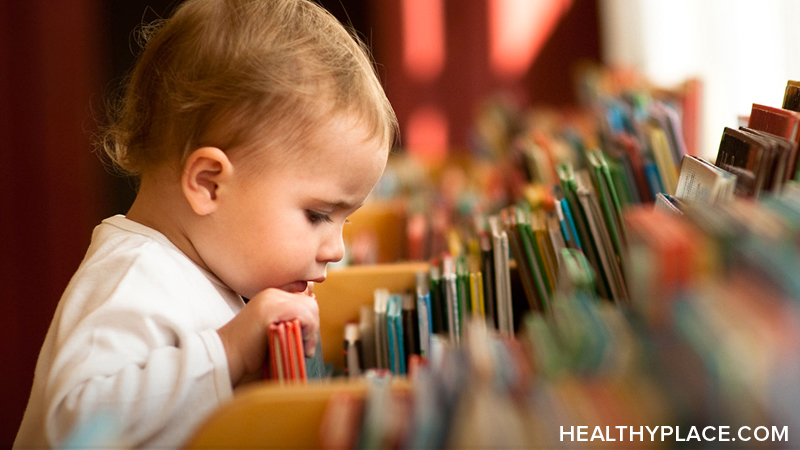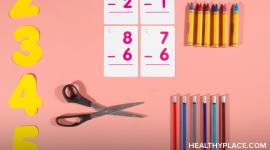What Learning Disabilities in Children Show Up Earliest?

Signs of learning disabilities in children can appear very early, sometimes during toddlerhood or the preschool years. These signs don’t indicate the presence of one learning disability over another. Of the multiple types of learning disabilities, any disorder can make an early appearance. Symptoms of a learning disorder can appear from the time a child begins to talk, or they might not appear until elementary school. The appearance of learning disabilities in children varies greatly.
While it’s true that any learning disability can show up when kids are very young, early Indicators of dyslexia seem to appear most frequently, although not because dyslexia is the disorder that appears earliest but because dyslexia is the most common learning disability.
Overall, learning disabilities in children appear at different times. When a learning disability appears varies for several reasons:
- The more severe the disorder, the earlier the signs will be evident
- The stronger a child’s abilities, the longer the delay in the appearance of a learning disability
- The presence of other disorders like ADHD, autism, or anxiety can cause early symptoms
Hints of learning disabilities in children can appear in the toddler years, but full onset, recognition, and diagnosis usually happen in elementary school when learning to read, write, and do math begin in earnest. Still, spotting signs early can lead to helpful interventions sooner rather than later.
Earliest Signs of Learning Disabilities in Children
Sometimes, the first signs children with learning disabilities exhibit are behavioral. Toddlers and preschoolers who struggle with language skills can become easily frustrated. They might frequently throw tantrums, exhibit oppositional behavior, or act helpless, wanting parents and caregivers to do things for them.
This behavior isn’t unexpected for their developmental age, and it can look like normal “terrible twos.” When a child is so young, it’s impossible to discern whether a learning disability is driving the behavior. Simply monitoring it and noting how long it lasts is an appropriate response.
In addition to behaviors, there are other early signs of learning disabilities in very young children. Noticeable developmental delays in one or more critical areas can sometimes be a disability showing itself:
- Gross motor delays (like pulling up to standing and walking)
- Fine motor delays (grasping objects, using fingers to eat)
- Talking later than normal
- Cognitive skills (problem-solving, such as fitting different shapes into a puzzle)
- Social/emotional delays (inappropriate behavior when interacting with others)
As kids grow into preschoolers and kindergartners, you may see different signs of learning disabilities.
Early Indicators of Learning Disabilities in Children in Preschool, Kindergarten
The following early signs of learning disabilities in children can point to a budding disorder. However, no child will exhibit all of them, and every child has the potential to have some of them. Learning and growing aren’t straightforward, flawless endeavors, so the presence of some learning disorder signs in preschoolers and kindergarteners typically isn’t cause for alarm. If a child has many of these signs, though, paying cautious attention is reasonable.
These learning disability signs might appear in children ages three through five:
- Difficulties learning and reciting nursery rhymes
- No interest in playing games with language sounds like repetition and rhyming
- Mispronouncing words
- Trouble learning and remembering names of letters, days of the week, numbers
- Unable to recognize, write letters
- Problems connecting letters to their sounds
- Unable to write own name
- Frequently baby-talks
- Poor concentration, short attention span
- Difficulty following directions
- Can’t properly grasp crayons
- Struggles with buttons, zippers, and tying shoes
- Poor physical coordination
Even when many signs of a learning disability are present beginning in early toddlerhood and continuing into preschool and kindergarten, professionals are reluctant to diagnose a learning disorder until a child is in grade school; in fact, waiting until third grade is common. Here’s why.
Why Learning Disabilities in Children Aren’t Diagnosed Until Elementary School
Indicators of a potential learning disability can be signals to pay attention to, but it’s nearly impossible to diagnose a very young child with a learning disorder. Young children are just beginning to develop skills, and the brain is far from full maturity. Therefore, to conclude that a toddler or preschooler has a learning disability could be harmful.
Additionally, while all children pass through the same developmental stages in the same order, each child’s rate of development is unique. Sometimes, people use the phrase “late bloomer” to describe a kid who matures more slowly than their peers. Before concluding that a child has a learning disability, it’s important to consider whether a child’s developmental delays are true delays or if that child is a “late bloomer.”
If struggles become more pronounced with time and other learning disorder signs appear, evaluation may be in order. Children with learning disabilities can do well, especially when you pay attention to early indicators and have your child assessed; as structured and fast-paced learning begin in early elementary school.
APA Reference
Peterson, T.
(2022, January 17). What Learning Disabilities in Children Show Up Earliest?, HealthyPlace. Retrieved
on 2026, January 12 from https://www.healthyplace.com/parenting/learning-disabilities/what-learning-disabilities-in-children-show-up-earliest



